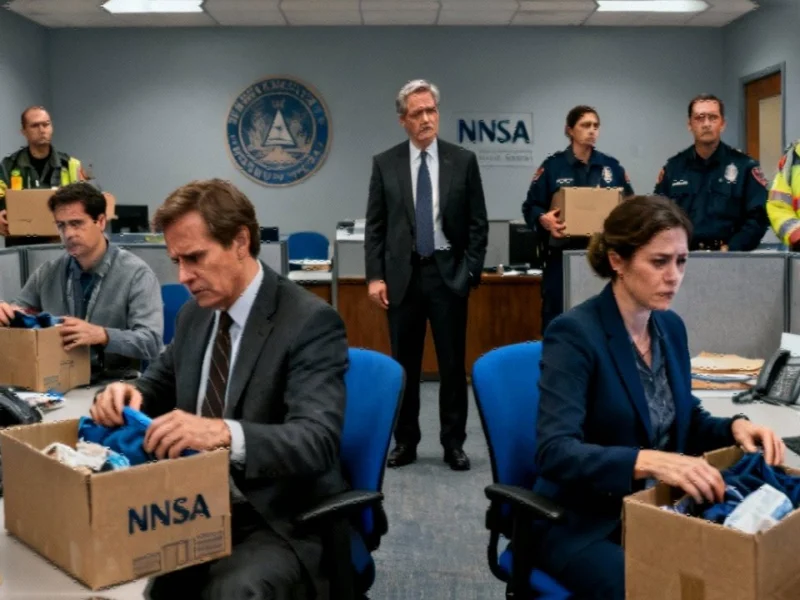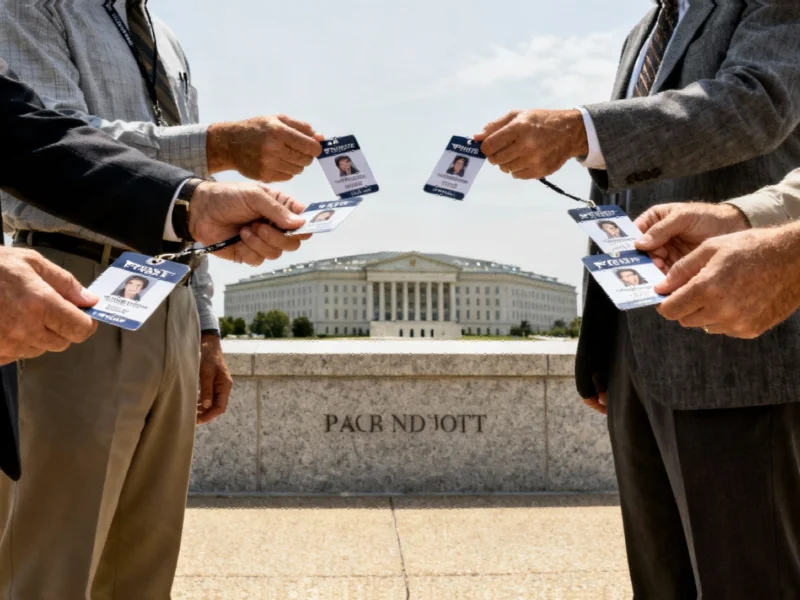Note: Featured image is for illustrative purposes only and does not represent any specific product, service, or entity mentioned in this article.
Critical Nuclear Workforce Disrupted by Budget Impasse
The ongoing government shutdown has now reached America’s nuclear weapons infrastructure, with the National Nuclear Security Administration (NNSA) preparing to furlough workers responsible for maintaining and modernizing the nation’s nuclear arsenal. Energy Secretary Chris Wright confirmed the impending personnel reductions, highlighting how political gridlock in Washington is affecting national security priorities.
According to Wright’s statements, the furloughs will specifically impact personnel “critical to modernizing our nuclear arsenal” – a concerning development given the agency’s dual mission of maintaining existing weapons while developing next-generation systems. The NNSA, which operates as a semi-autonomous branch of the Department of Energy, employs approximately 2,000 workers who oversee roughly 60,000 contractors across national laboratories and weapons facilities nationwide.
Global Nuclear Security Implications
The timing of these furloughs raises particular concerns about international nuclear security efforts. The NNSA plays a crucial role in securing dangerous nuclear materials worldwide, including ongoing operations in Ukraine amid the continued conflict with Russia. While emergency services personnel will remain on duty, the reduction in staffing could hamper critical non-proliferation work at a delicate geopolitical moment.
Daryl Kimball, executive director of the Arms Control Association, questioned the administration’s priorities, stating: “If the Trump administration really thinks the NNSA’s functions are important – and many of them are essential for nuclear facility safety and security – I am sure they can find the funds to keep the workers on the job.” This sentiment echoes concerns throughout the national security community about the shutdown’s cascading effects.
Modernization Program at Risk
Secretary Wright expressed particular concern about the impact on nuclear modernization efforts, noting that the program was “just getting momentum” before the shutdown. The potential furloughs threaten to disrupt progress on replacing aging nuclear weapons with newer systems – a multi-decade initiative with significant budgetary implications.
A recent Congressional Budget Office report projected that operating and modernizing America’s nuclear forces through 2034 could cost $946 billion, representing a 25% increase over previous estimates. These nuclear weapons agency operational challenges come at a time when other government contractors are facing similar uncertainties due to budgetary constraints.
Broader Industry Impact
The NNSA furloughs represent just one aspect of how the shutdown is affecting technology and defense sectors. Similar industry developments in the corporate world show how leadership decisions during turbulent times can have lasting consequences. Meanwhile, other sectors continue to push forward with related innovations despite government instability.
The situation also highlights how different technology sectors are navigating current challenges. Companies like Tesla continue advancing their strategic initiatives despite external pressures, while other organizations are making significant moves in emerging areas. The broader technology landscape shows how companies are adapting to changing market conditions, even as government agencies face operational constraints.
Contractor Fallout and Economic Consequences
Beyond direct government employees, the shutdown threatens “tens of thousands of layoffs of contractors” according to Wright’s comments to USA Today. This massive reduction in specialized nuclear workforce could have lasting effects on the nation’s weapons complex, potentially creating expertise gaps that take years to rebuild.
The nuclear sector isn’t alone in facing disruption from external factors. Other technology leaders are making strategic moves to capitalize on market trends and changing consumer preferences. As these private sector companies navigate their own challenges, the contrast with government agencies hampered by budgetary politics becomes increasingly stark.
Long-term Strategic Concerns
Nuclear security experts warn that even temporary disruptions to the NNSA’s workforce could have lasting consequences for both domestic and international security priorities. The specialized nature of nuclear weapons work means that losing experienced personnel, even temporarily, creates knowledge gaps that are difficult to fill quickly.
“To have everybody unpaid and not coming to work, that will not be helpful,” Wright acknowledged, underscoring the practical challenges of maintaining complex nuclear systems with reduced staffing. As the shutdown continues into its third week, the situation illustrates how political disagreements in Washington can directly impact critical national security functions that typically operate far from public view.
The furloughs come at a time when nuclear modernization was gaining traction, raising questions about whether the program can maintain its schedule despite the current operational pause. With nuclear weapons expenditures divided between the Pentagon and NNSA, the shutdown creates coordination challenges that extend beyond any single agency.
This article aggregates information from publicly available sources. All trademarks and copyrights belong to their respective owners.



